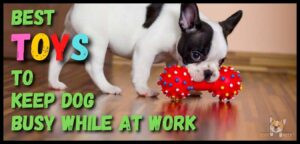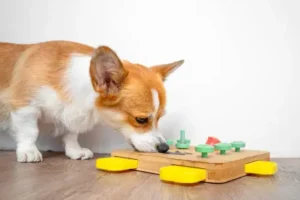Understanding Canine Behavior: Dogs are beloved pets for many people, and their playful behavior is often one of the reasons why we love them so much. However, sometimes our furry friends can be a little mischievous when it comes to playtime. Have you ever noticed your dog teasing you with their toys?
It can be frustrating when they refuse to give up their favorite toy or seem to be taunting you with it. Understanding canine behavior is key to building a strong bond with your pet and creating positive play experiences. In this article, we will explore the psychology behind playful teasing in dogs and provide tips for encouraging healthy and happy playtime with your furry friend.
The Psychology of Playful Teasing in Dogs
Playful teasing is a common behavior in dogs that can be both entertaining and confusing for their owners. To understand why dogs engage in this behavior, it’s important to look at the psychology behind it.
Dogs are social animals that have evolved to communicate with each other through body language and vocalizations. Playful teasing is a form of communication that allows dogs to interact with their owners in a playful way. It’s a way for them to initiate play and engage in social bonding.
Research has shown that play is an important part of a dog’s development and well-being. It helps them build confidence, develop social skills, and relieve stress. Playful teasing is just one of the many ways that dogs engage in play, and it’s often a sign that they’re feeling happy and comfortable in their environment.
However, it’s important to note that not all dogs engage in playful teasing. Some may prefer more straightforward forms of play, such as fetch or tug-of-war.
Additionally, some dogs may engage in teasing behavior as a way to assert dominance or control over their owners. This can be a sign of a deeper behavioral issue that requires professional intervention.
Overall, playful teasing is a natural and normal behavior in dogs that can be a fun way to bond with your furry friend. By understanding the psychology behind this behavior, you can encourage positive playtime and strengthen your relationship with your dog.
Reasons Why Dogs Tease Their Owners with Toys
Dogs are known for their playful nature, and it’s not uncommon for them to tease their owners with toys. But why do they do this? There are several reasons why dogs may engage in this behavior.
Firstly, teasing can be a way for dogs to initiate playtime with their owners. By bringing a toy over and teasing their owner with it, they’re essentially saying “let’s play!” This is especially true if the dog is wagging its tail and seems excited.
Secondly, teasing can be a way for dogs to show off their toys or to seek attention from their owners. Dogs are social animals and crave interaction with their human companions. By teasing their owners with a toy, they may be seeking attention or trying to impress them.
Thirdly, teasing can be a way for dogs to assert their dominance over their owners. This is more common in dogs that have not been properly trained or socialized. If a dog feels like it’s in charge, it may use teasing as a way to control the situation and get what it wants.
It’s important to note that teasing behavior can also be a sign of anxiety or stress in dogs. If your dog is excessively teasing you with toys, it’s worth consulting with a veterinarian or animal behaviorist to rule out any underlying medical or behavioral issues.
Understanding why your dog teases you with toys can help you develop a positive and rewarding playtime routine with your furry friend. By providing appropriate toys and setting boundaries, you can encourage healthy playtime behaviors and strengthen your bond with your dog.
Tips for Encouraging Positive Playtime with Your Dog
To encourage positive playtime with your dog, it’s important to establish some ground rules. First, make sure that you are the one initiating playtime and not your dog. This will help your dog understand that you are in control of the situation and prevent any potential aggression or dominance issues.
Secondly, use toys that are appropriate for your dog’s size and breed. Avoid toys that are too small or easily breakable, as they can pose a choking hazard or cause injury. Additionally, choose toys that are interactive and mentally stimulating, such as puzzle toys or treat-dispensing toys.
Thirdly, set aside specific times for playtime each day. This will help your dog understand when it’s time to play and when it’s time to relax. It will also prevent your dog from becoming overly excited or demanding attention at inappropriate times.
Fourthly, be patient and consistent. Dogs learn through repetition, so it may take some time for your dog to understand the rules of playtime. Stay calm and positive, and reward good behavior with treats or praise.
Finally, always supervise your dog during playtime to ensure their safety and prevent any destructive behavior. If your dog becomes overly aggressive or starts to exhibit unwanted behavior, end the play session immediately and seek professional help if necessary.









